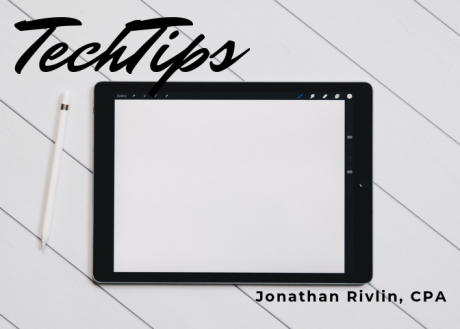First, you may or may not know about the shut down going on in the government.
The Internal Revenue Service released notification that despite the government shut down, the IRS confirmed that they will start processing tax returns beginning January 28, 2019, and will begin providing refunds to taxpayers as scheduled. Hopefully, they’ll get started, the shut down will stop, and we’ll be back on track before needing to worry about anything else.
As you know, the first day of the 2019 Maryland Legislative Session was this week.
We have our own insider, James Arnie, sharing information with us from the Legislative Session. Jim is the past director of the MD Department of Revenue. Here’s a bit of information he shared with us after the attending the first day of the 2019 Maryland Legislative Session:
There’s a small window to hear bills during the Session lasting from January until April. Last year, there was a total of 3,301 bills introduced into the Session. That amount was comprised of 1,269 Senate bills and 1,832 House bills. From the bills that were submitted, 855 were enacted into law. That’s about 27-28% of all the bills introduced that became law. Still, a pretty good number for that short of time.
Year after year we see bills on certain topics that pop their little heads up consistently; one of them being the IRAs and Pension Exclusion. We knew we wouldn’t be surprised if we saw something like that again this year by someone.
As if not to disappoint, there were two Senate bills that were pre-filed on the pension exclusion already that appeared.
The first bill was allowing the IRA rollover to be included as an exclusion, subtraction modification. If you had a pension using GM as an example, I got my pension, and they were recommended to roll it over, load it into an IRA. Currently, IRAs cannot be excluded. But, they’re saying that, under this new bill that’s being submitted, a rollover from a real pension can be included. Of course, it had to have been an employer pension provided plan initially.
The second one was basically increasing the pension exclusion amount that you begin with. For example, in 2020, the pension exclusion amount would be $33,000, then you would reduce it by any social security amount. And, each year, that amount for the pension exclusion would increase the following year to about $43,000, the following year was $54,000, $65,000, and topping out at $75,000. But then, there’s a provision written in that if you have pension income that reaches $100,000 or more, you are not entitled to any type of pension exclusion. It would have a sealing on it. You would be $0 pension exclusion.
What is cross-filing and why is that done at times?
A cross-filed bill is when you get a House sponsor and a Senate sponsor and each of them will introduce the same bill. That method enhances your possibility or your probability of getting one of the two bills passed through the General Assembly. Sometimes both bills pass, sometimes just only one, and sometimes neither may make it. It just improves your probability of having success and getting a bill through.
If a bill, even if it’s a single filed bill, passes the house of origin and goes over to the opposite house when they have a hearing, normally they don’t allow additional testimony at the second hearing. They have all the information from the first hearing, and they don’t allow oral testimony at the second hearing. And that is a way to speed up the process.
When you cross-file, you hear testimony on both sides. Initially, at the original house. But then, say if both of them pass, and they cross houses, then there’s no more oral testimony on that bill. The sponsor provides his explanation of the bill, the members of the committee have a chance to ask any questions, but there’s no groups or anything like that that go up and do the oral testimony. If they’ve added an amendment or anything in the bill, at that point, they still do not allow any testimony.
We’re currently looking at a Firm Mobility bill for the CPAs in the state of Maryland that’s going to be put up, and rumor has it a possible ACA bill on the Affordable Care Act as well as some cyber security regulations with the identity theft and everything going on. However, nothing was seen during the first day. There was a cyber-security bill, but not dealing with tax preparation or accountants or anything of that nature.
Hearing from our members, a lot of them would like to hear the General Assembly address the inability to itemize when you don’t itemize on the Federal return. Nothing was seen on that from the initial bills coming out, though. The standard deduction for this year for the 2018 tax season was increased, but it was just a small amount. But, there was a bill in the pre-file list to increase the standard deduction, minimum and maximum.
Jim has been working with the MSATP since his retirement, and done an amazing job!
What does Jim do for the Society during the Legislative Session? How does he keep us informed on what’s going on?
Each day the House and the Senate will introduce bills, they provide a synopsis of those bills. They’re in numerical order by bill assignment. And, it’s just a short overview that shows the sponsor, the primary sponsor, a brief title, and a brief description of what that bill entails. He reviews every bill that is on the synopsis each day for both the House and the Senate. Usually, you can detect if a bill is applicable to a tax type person. For example, an individual tax, it will say “individual income tax” or “corporate sales tax” and so forth.
When you get into health matters and cyber-security issues, it will trigger a thought that it would be applicable but you have to then go into the bill itself and see what the nuts and bolts of that particular bill are. From that, he develops a list of various bills that he feels that the Society should be aware of and those reports are submitted every Friday after the week of introductions have been completed. And, they are each reported separately. All income tax bills on one report, sales tax and the like on another, and those are sent to MSATP.
Then, MSATP forwards them to members that are going to review those bills.
The members decide if they need to get the actual bill on the website and determine if any action should be taken by the Society. And by action, he means do we want to not take any action in terms of supporting or opposing, but just track that bill to see what the outcome is? Or, if we feel strongly that we need to support a bill, we would indicate that. And if so, do we do that in just written testimony or both written and oral testimony at the hearing? Or do we oppose a bill both in writing and/or orally?
As a Society, we do have our pack that does a lot of work. In fact, we tried to narrow it down to specific topics to help: tax property, property tax, tax regulations, professional regulations, etc. This preparation prevents us from looking at something that has to do with childcare or something like that. If we didn’t narrow down, it would be too much with 3000 bills. Especially since it’s all volunteers doing that and looking at this.
We track 7 topic areas as we added cyber-security this year because of the provisions in several other states. They developed a law dealing with cyber-security regarding taxpayer preparation systems. Since that was going on in other states, we now have expanded our watchful eye on these matters.
Interestingly, Jim went back last year to see if there were any cyber-security bills, and there were a lot of cyber-security bills introduced at Maryland General Assembly but they were mostly related to election systems because of all the hacking and so forth. So, you’re likely going to see that category expand greatly.
Now, in addition to that, when we see something that we can help or have some expertise on, we reach out to the senator or the representative and ask if we can help. “This is what we’re seeing. We’re here in the trenches.” We can give them some feedback which is really important. It’s essential that we keep all of our members aware of what’s going on.
Legislative Highlight
We’re going to try to keep our members aware of what’s going on down in Annapolis. One addition we’re implementing is a new section in our e-weekly called “Legislative Highlight.” What we’re going to do is highlight one specific bill that we really feel is a vital issue for not only our members but for their clients. For instance, it could be a cyber-security issue. Maybe something to do with how they’re handling their credit cards. We’re going to do an article on that subject in our e-weekly and then, from there, we’re going to expand that into a blog so we can get some feedback and interaction.
Be sure you follow along on our website at https://www.msatp.org/advocacy/
We may not be able to show the bill in detail, so in that article, we’ll show you where to go to review the full bill. For more details on the bills, go to THIS LINK. If you want to go see the bill in its entirety or learn if it’s cross-filed, all of those factors we mentioned in this article, you can go see those as well.
We just had the election, and there are 60 new members of the General Assembly.
That change may very well make an impact on the Session because that’s ⅓ of the General Assembly. With 181 members in the General Assembly, and 60 of them brand new. That’s amazing. However, some of you may not know who they are to contact them.
People’s voices are powerful and so we’re showing you how to find them. If you don’t know who your legislators are, you can reach out. There is a link right there on the Maryland General Assembly website. Across the top, it has a Legislators button. You click on that (or click here to access) and it will list the senators on one side and the delegates on the right side in alphabetical order, and it shows what district they’re in. It also has a link you can click on the link, enter your address, and it will tell you who your senators and delegates, congressman, representatives are.
You can also learn about the hearings!
In fact, to see how a hearing functions, you can go into the schedule and, let’s say a bill is going to be heard about budget and taxation, you can click on that committee, and then the day and time of the hearing, if it’s 10:30 in the morning, you can click on it and watch it live on your computer. Fair warning, some of them could be very long. Some start at 1:00 and when Jim was a director, he was there at 6 and 7:00 at night still. You never know when the bill that you’re there for is going to be heard. They don’t give you a pre-schedule or itinerary. Some of those hearings, they have a lot of supporters or opposition and a group that will go up 3 or 4 people, and they only get around a minute each. So, they do try to keep it controlled but they can still take a while.
Jim works very closely with our group of volunteers, our committee, the Committee on Professional Regulation. These are the people that review the bills after you say, “This might be something you might want to look at.” The committee looked at 310 bills last year out of 3000, 10% is what was reviewed.
The General Assembly has dates set that you have to introduce bills by because after that date it has to go through a rules committee which slows up the process and means that it’s less likely to get passed during that Session. Last year, the cut-off date on the Senate side was February 10th. It was a week earlier for the House. Jim went back and looked, and on February 10th, 97% of the bills that we tracked or looked at for review were filed by February 10th. As it gets near the end of the Session, then budget has to be approved, they may run into differences in areas that can take up a lot of time, and they won’t be having hearings on individual bills. So, there’s a lot that goes on, but it motivates bills to be submitted by that cut-off date.
We have a group of volunteers that do an amazing job doing this, and we’re always looking for other people to help out. If being the eyes and ears of the members of the Society is something that you’re interested in, then we’d love for you to reach out. It is pretty exciting during this time of year. If you have not taken time to go down and listen to a hearing during the Session, it’s a real learning experience to see how elements happen.
If you’re interested in assisting MSATP on legislative issues, email sandy@msatp.org
Final Thoughts on Upcoming Session
Jim thinks it’s going to be interesting for two reasons.
- The previously noted 60 new members in the General Assembly.
- As a result of the elections, we have a lot of new committee chairs and vice chairs. It’s going to be interesting to see how they function, how they allow the committees to operate, and so forth. That could come into play this year very much.
A big thank you to Jim for the great job that you’re doing for this Society. We really appreciate it.
Reminders:
Next week, we will be hosting our Federal Tax Update Seminar in Gaithersburg on January 16th. We do still have some space available. If you want to join us, it’s going to be a great opportunity for you to still get all the information you need for you to compare tax returns from 2018. Register HERE.
Also, on January 17th at 5:00 pm, we’ll be hosting our Tax Season Kick-Off Event. Woohoo! We are going to be at the Columbia Office. Come network, have some wine and cheese, and enjoy the presentations we have planned. If you want to partake and join us, we still have space available. RSVP for the event HERE.





